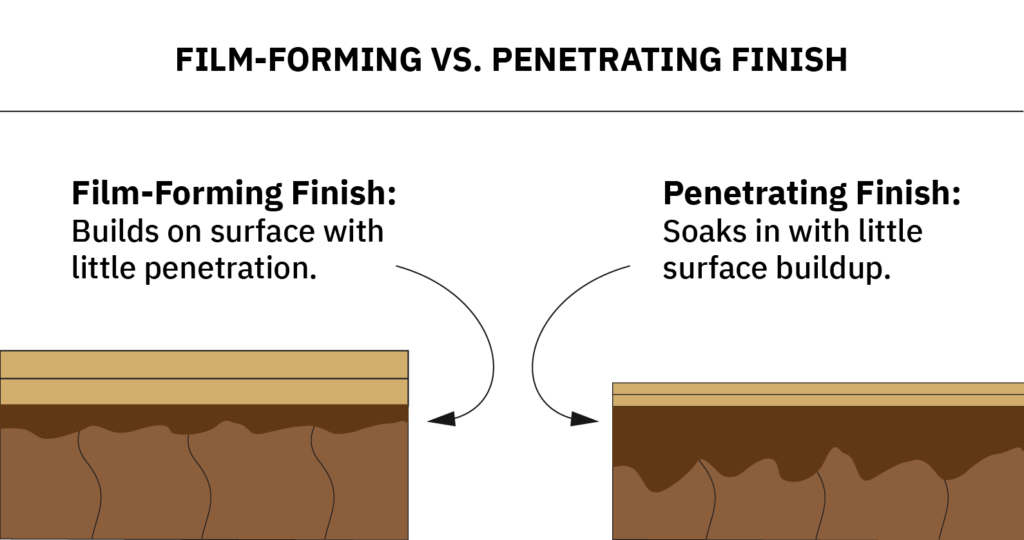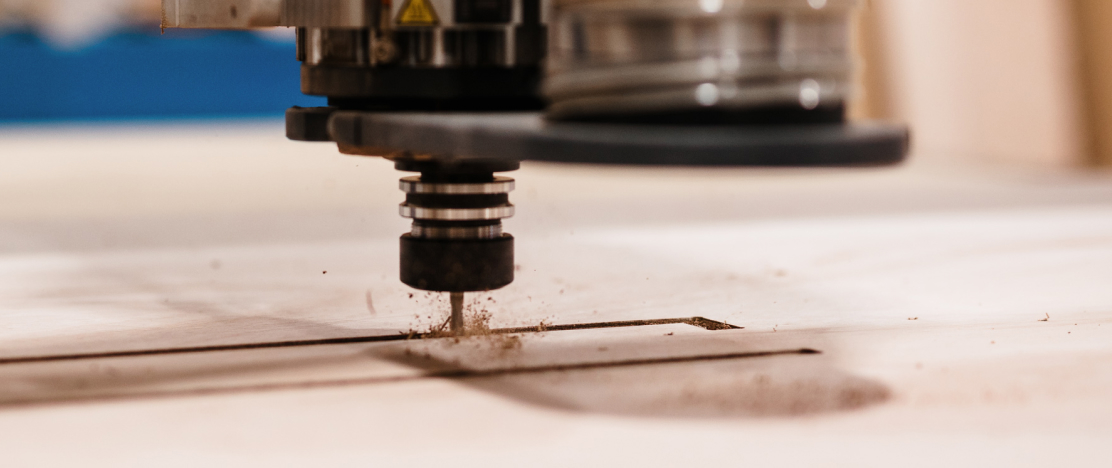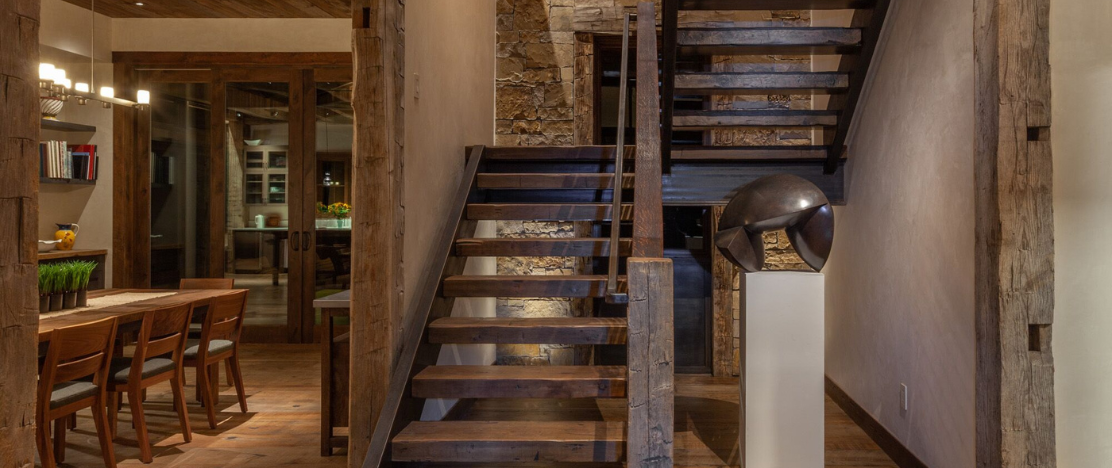Film-forming or Penetrating Stains — What is the Best Finish for Your Project?
There are countless finishes for wood projects, and it can be hard to make sense of the options. To pick the right product for your project, it’s helpful to understand the difference between the two main types of stain: film-forming and penetrating.
Each carries unique advantages and considerations that we’ve outlined below.

1. Film-Forming Stains: A Shield of Protection
Film-forming stains form a protective layer on the wood surface. This type of finish creates a shield that protects the lumber against external elements such as moisture, UV rays, and abrasion.
Benefits of Film-Forming Stains:
- Enhanced Protection: The protective film prevents water penetration, reducing the risk of warping, cracking, and rotting over time.
- UV Resistance: With UV-resistant additives in exterior finishes, film-forming stains are ideal for exterior wood exposed to sunlight, helping to prevent fading and deterioration.
- Longevity: The durable film offers a longer-lasting finish, extending the lifespan of wood and minimizing the need for frequent reapplication.
| Considerations for Film-Forming Stains: Surface Preparation: Properly preparing the surface is crucial to ensure the new film adheres correctly. Maintenance: While offering exceptional protection, film-forming stains require more maintenance as the protective film wears down. Application Skill: Applying these stains requires skill to achieve an even finish, as brush marks or uneven application may be more noticeable. |
When to Use Film-Forming Finishes:
Film-forming finishes are particularly well-suited for:
- Siding
- Soffit
- Trim and moulding
- Panelling
- Ceiling
- Furniture
It’s important to note that film-forming finishes are not recommended for decking projects because the finish won’t withstand constant wear and tear.
2. Penetrating Stains: Enhancing Natural Beauty
Penetrating stains work by soaking into the wood fibers, enhancing the wood’s natural beauty and providing protection from the inside out. Unlike film-forming stains, they become part of the wood’s structure.
Benefits When Using Penetrating Stains:
- Easy Application: These stains are generally easier to apply, with imperfections blending into the wood’s natural characteristics.
- Less Maintenance: While they may need more frequent reapplication, touch-ups don’t require stripping the entire surface.
- No Chance of Cracking/Peeling: When a penetrating stain ages, the colour will fade but there will not be any cracking or peeling.
| Considerations for Penetrating Stains: Protection Level: They may not be as effective as film-forming stains in extreme outdoor conditions. Color Variation: Penetrating stains can produce different colors on different wood species due to their interaction with natural pigments. Application Frequency: More frequent reapplication may be necessary, especially if you want to maintain appearance and protection. |
When to Use Penetrating Stains:
A penetrating stain is particularly well-suited for most of the same projects as film-forming but is additionally ideal for:
- Decking
- Fencing
One thing to note about indoor applications is that penetrating finishes are not as easy to clean. It can be used for panelling and trim/moulding, but it’s often easier to clean a film-forming finish.
What finish should you choose?
The choice between film-forming and penetrating stains depends on project requirements and personal preferences. To make an informed decision for your specific project, you can reach out to one of our knowledgeable salespeople, and they can guide you through the best options and even showcase samples of different finishes.

